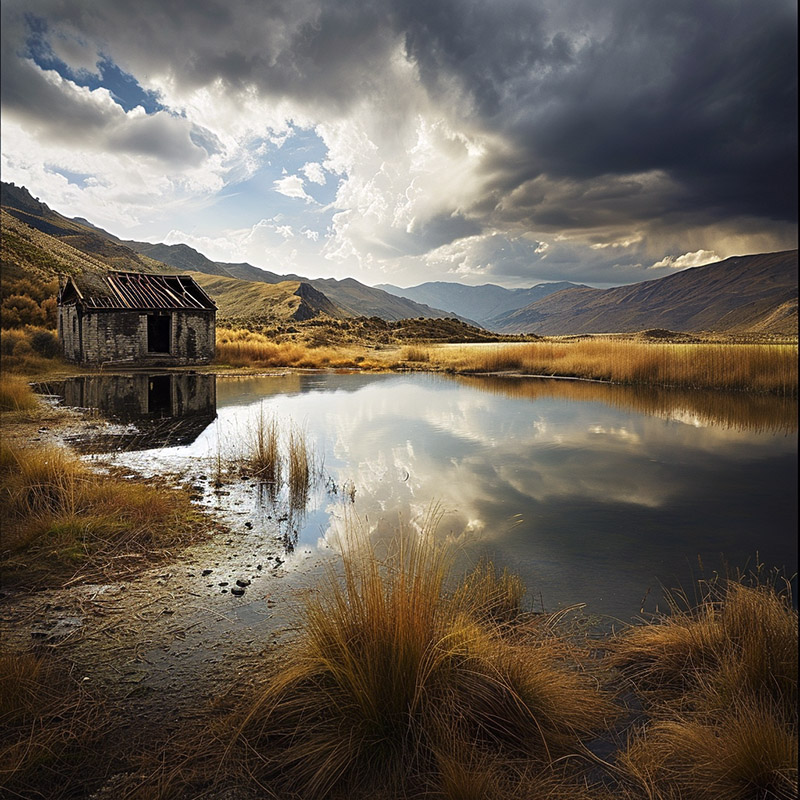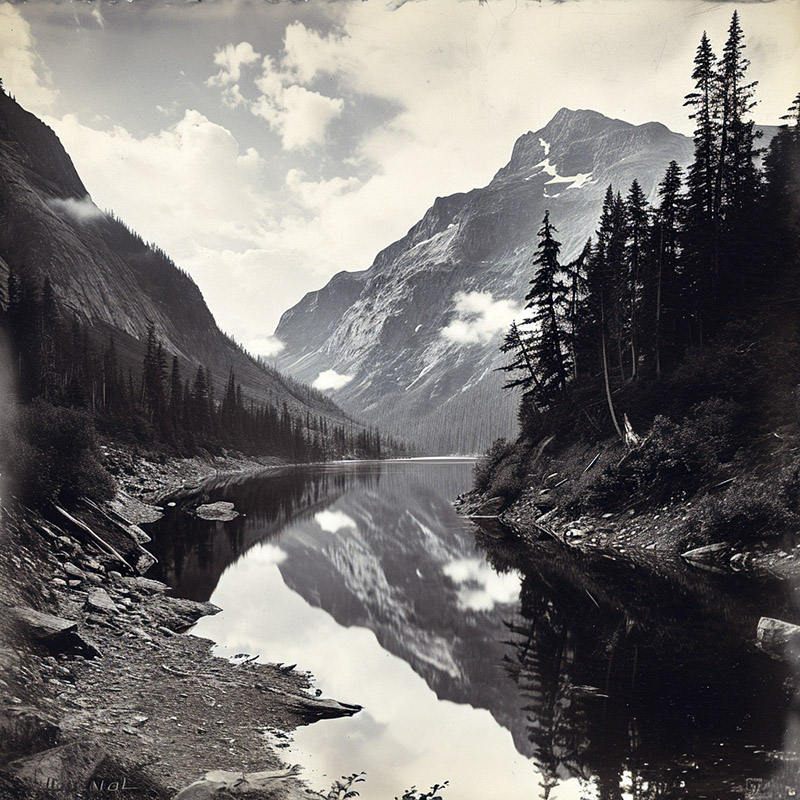 Beginning in the 1840s, photographers photographed the American landscape for a public that was not inclined to travel long distances because of the expense and inconvenience involved. Photographs include views of natural sites in the eastern regions of the country such as Niagara Falls and the Susquehanna River, as well as battlefields of the Civil War. They also include views of the dramatic terrain of the American West, including California's Yosemite Valley and Colorado's Snowy Range, as photographers participated in survey expeditions sponsored by the government or private enterprises for which photographs provided a visual record.
Beginning in the 1840s, photographers photographed the American landscape for a public that was not inclined to travel long distances because of the expense and inconvenience involved. Photographs include views of natural sites in the eastern regions of the country such as Niagara Falls and the Susquehanna River, as well as battlefields of the Civil War. They also include views of the dramatic terrain of the American West, including California's Yosemite Valley and Colorado's Snowy Range, as photographers participated in survey expeditions sponsored by the government or private enterprises for which photographs provided a visual record.
Loaded down with cumbersome, large-format cameras, heavy glass plates, and delicate bottles filled with chemicals like silver nitrate, 19th-century photographers braved many hardships and dangers as they crossed the country by horse-drawn wagon. Prior to the 1880s, photographers were required to prepare each negative before exposure, then develop and fix it immediately, while the chemicals on the glass plate were still damp. Tents or their wagons served as portable darkrooms for this on-site processing.
Enlarging photographs was not common during the 1800s. Instead, photographers made prints by placing the negative directly in contact with the photographic paper. The finished photograph was as large as the negative. All of the photographs in the exhibition are contact prints. Many of them are quite large.
Several of the great figures of 19th-century American landscape photography are included in this exhibition including Timothy O'Sullivan, who joined the Clarence King expeditions of 1867-1869 to photograph western Nevada, eastern California, Idaho, Utah, and southern Wyoming; then later joined First Lieutenant George M. Wheeler's expeditions of 1871, 1873, and 1874 to Arizona, New Mexico, Nevada, Utah, and California. Also included are the photographs of William Henry Jackson who joined Ferdinand Hayden on expeditions, including a famous trip in 1871 to the Yellowstone region.
From Cumberland, Maryland, to Cape Horn, Oregon, Eloquent Vistas: The Art of 19th-Century American Landscape Photography from the George Eastman House Collection provides some of the first photographic portraits of the United States of America. The exhibition, organized by the George Eastman House International Museum of Photography and Film, Rochester, NY, is on view at Carnegie Museum of Art from February 21 through May 9, 2004.
Photo: Eadweard Muybridge, American (1830-1904) - The Domes from Merced River, Yosemite Valley, c. 1874, albumen print, George Eastman House
Timothy O'Sullivan

Timothy O'Sullivan was a significant figure in 19th-century American photography, renowned for his landscape photographs. Below are key aspects of his life and work:
- Background: Timothy O'Sullivan, born in 1840, initially gained recognition for his work during the American Civil War as a photographer documenting battlefields.
- Western Exploration: He is best known for his photographs of the American West. His work was part of geological surveys, capturing unexplored territories, including the Yosemite Valley, the Rocky Mountains, and the Sierra Nevada.
- Photographic Techniques: O'Sullivan predominantly used the collodion process, producing glass plate negatives that offered sharp detail and high resolution, ideal for capturing the vastness and intricacies of landscapes.
- Artistic Style: His work is characterized by its stark realism and absence of romantic embellishment, presenting the landscape in a raw and unadorned manner.
- Influence on Photography: O'Sullivan's work significantly influenced the field of landscape photography, providing a truthful representation of the American West during a time of expansion and exploration.
- Historical Significance: His photographs provide valuable historical records of the American frontier and are praised for their contribution to the visual documentation of American history.
Timothy O'Sullivan's contributions to landscape photography have made him a celebrated figure in the history of American art and photography.
William Henry Jackson

William Henry Jackson was an influential American photographer, known for his striking images of the American West in the late 19th and early 20th centuries. His work has been pivotal in documenting the American landscape. Key highlights include:
- Early Life: Born in 1843, Jackson developed an interest in photography at a young age. He served as a Union soldier during the Civil War, where he practiced photography.
- Exploration of the West: Jackson is most famous for his photographs of the Western United States. His work includes images of Yellowstone, the Rocky Mountains, and Native American communities.
- Contribution to U.S. Geography: He joined the U.S. Geological and Geographical Survey of the Territories in 1870, capturing landscapes that few Americans had seen, thus contributing significantly to the understanding of American geography.
- Photographic Techniques: Jackson used the wet plate collodion process for his field photography, requiring a portable darkroom due to the immediacy of developing required.
- Artistic Influence: His photographs were not only important documentation but also possessed an artistic quality, capturing the grandeur and scale of the Western landscapes.
- Legacy and Recognition: Jackson's work played a key role in convincing the U.S. Congress to establish Yellowstone National Park. His photographs remain a vital historical record and are celebrated for their beauty and historical significance.
William Henry Jackson's pioneering spirit and contributions to landscape photography and exploration have cemented his place as a key figure in American history and art.